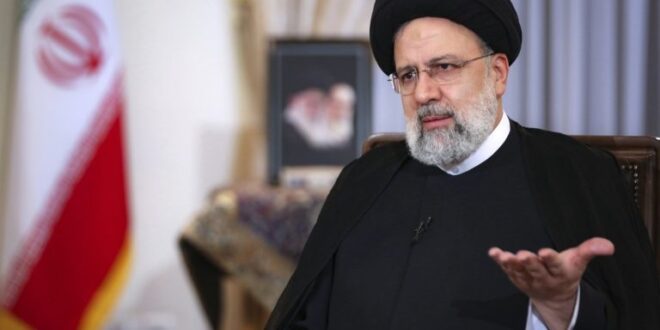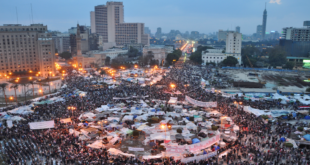Iranian leaders are exchanging a wide range of visits with regional leaders to break Tehran out of its isolation.
Syrian President Bashar Al Assad’s visit to Iran represents his attempt to consolidate outside support amid Russia’s distraction with its war against Ukraine.
Gulf state leaders are pressing Tehran to compromise on outstanding issues that are holding up a revival of the 2015 multilateral Iran nuclear agreement.
Oman is looking to Iran for new investment and gas supplies, as well as its cooperation in ending the war in neighboring Yemen.
The recent flurry of high-level visits between Iran and regional states indicates that Tehran is succeeding in its campaign to break out of its isolation, even though it has not assuaged widespread wariness of its ultimate ambitions. During the month of May, Syrian President Bashar Al Assad and Emir Tamim bin Hamad Al Thani of Qatar visited Tehran, respectively, to meet with Supreme Leader Ali Khamene’i and Iranian President Ibrahim Raisi, and Raisi visited the Sultanate of Oman to meet with Sultan Haythim bin Tariq Al Said. Qatar and Oman are longtime allies of the United States, and their exchanges with Iran reflect, at least in part, an intent to advance not only the interests of the Persian Gulf states but also those of the United States. Syria’s Assad, by contrast, is a U.S. adversary and a pillar of Iran’s “axis of resistance” to what Tehran asserts is an attempt by the United States and its key ally, Israel, to exert regional hegemony.
Assad’s early May visit to Tehran – he last visited in February 2019 – represents an attempt to ensure that, with Russia heavily engaged in Ukraine, he has enough outside support to keep armed rebels at bay. Iranian and Russian military intervention during 2013-2015 were key to Assad’s defeat of the rebellion, which is now largely cornered in Idlib Province. Russia reportedly has been redeploying some of its regular and contract (Wagner Group) forces from Syria and Libya to Ukraine to compensate for huge losses in Ukraine. Assad no doubt fears that the drawdown of Russian forces, and particularly combat aircraft, from Syria will embolden the armed opposition. Assad visited Tehran seeking to shore up Iran’s commitment to continue helping exhausted Syrian regular forces and Syria’s economy. Iran is a major supplier of credits, grants, and oil to Damascus, which is extensively sanctioned by the United States and the European Union (EU) countries; Tehran’s financial help has been a key to Assad’s survival. In the course of the Assad visit, Iranian leaders also discussed Iran’s expanding investments in various segments of Syria’s economy. The investments in Syria provide financial benefit to Iran, helping Iranian leaders assuage domestic opposition to the intervention in Syria.
The high-level visit exchanges between Iran, Qatar, and Oman sought to not only lower Gulf tensions but also advance the U.S. objective of restoring the 2015 Iran nuclear agreement. Tehran’s willingness to exchange visits with Omani and Qatari leaders demonstrates its eagerness to engage with even those regional leaders who are strategically aligned with the United States. And, Oman and Qatar could prove useful to Iran because both Gulf states are proven mediators between Washington and its regional adversaries, including Iran, the Taliban, and the Houthi movement in Yemen. In the course of their meetings with their Iranian counterparts, Emir Tamim of Qatar and Sultan Haythim of Oman urged Iran to resolve the few outstanding issues holding up the full restoration of the 2015 multilateral Iran nuclear deal that the Trump administration abrogated in 2018. Oman and Qatar see the restoration of that agreement, which will include the lifting of sanctions on Iran, as not only lowering Gulf tensions but also facilitating the implementation of long-stalled Iran-Gulf projects and other commerce. The Gulf-Iran leadership visits build on a year-long Baghdad-brokered Iran-Saudi dialogue, the core objective of which is to prevent Iranian and Iran-backed attacks on shipping in the Gulf and on Gulf state installations. In the course of its reporting on the May visits, Iranian media added that President Raisi was planning to visit the United Arab Emirates (UAE), a key Saudi ally, although the visit apparently has been delayed over Iran’s objections to the expanding ties between the UAE and Israel.
Ending the conflict in Yemen, in which Iran supports Houthi rebels who control much of northern Yemen, is a particular concern for Oman’s leaders. Oman shares a long and tense border with Yemen and worries about spillover from that war. Muscat hosts some Houthi leaders as a safe space for them to conduct talks with outside actors and mediators. Omani officials want Iran and Saudi Arabia, at the very least, to pressure their Yemeni allies to extend a two-month ceasefire, if not resolve the conflict entirely. Although the Yemen issue is high on Muscat’s agenda with Iran, Raisi’s visit to Muscat highlighted expanding economic ties between them. The two leaders, both seeking to attract additional foreign investment, signed several memoranda of understanding to expand trade in various fields. Iran is already a large investor in Oman’s efforts to develop a trading hub at Al Duqm port. Iran also agreed to revive a project for a pipeline to carry Iranian gas to Oman; the project has been stalled by U.S.-Iran tensions since it was first agreed between the two governments in 2013. The decision to revive that pipeline project appears to reflect Omani optimism that the Iran nuclear deal will be restored; the technology and financing requirements for the pipeline would be impossible to secure unless U.S. sanctions on Iran are lifted. Although the May exchanges of visits between Iran and two key Gulf states might fuel a sense of optimism for a more peaceful and economically prosperous Gulf, all of the Gulf states still share wariness about Iran’s support for regional armed factions. Iran has utilized its allies to project power against the Gulf states and would not hesitate to do so when its interests are served – exchanges of high level visits notwithstanding.
 Eurasia Press & News
Eurasia Press & News



